Viking RVDR33025BVCLP Handleiding
Bekijk gratis de handleiding van Viking RVDR33025BVCLP (2 pagina’s), behorend tot de categorie Fornuis. Deze gids werd als nuttig beoordeeld door 25 mensen en kreeg gemiddeld 3.7 sterren uit 13 reviews. Heb je een vraag over Viking RVDR33025BVCLP of wil je andere gebruikers van dit product iets vragen? Stel een vraag
Pagina 1/2

Interior Oven
Light Button
Left Front Burner
Control Knob
(18,000 BTU)
Left Rear Burner
Control Knob
(8,000 BTU)
Right Rear Burner
Control Knob
(12,000 BTU)
Right Front Burner
Control Knob
(17,000 BTU)
Oven
Temperature
Control Knob
Oven
Function
Control Knob
Center Burner
Control Knob
(9,000 BTU)
Self Clean
Indicator Light
Oven
Temperature
Indicator Light
Broil element
(3) Oven racks
Oven
light
Concealed
bake element
TruConvec™ element
(behind baffle)
Range Controls
*Note: The above information is given as a guide only. You may need to vary the heat settings to suit your personal requirements.
BAKE
(Natural
Airflow Bake)
Full power heat is
radiated from the
U-shaped bake
burners in the
bottom of the
oven cavity and is
circulated with natural airflow. This function is
recommended for single rack baking. Many
cookbooks contain recipes to be cooked in the
conventional manner. Conventional baking is suitable
for dishes that require a high temperature. Use this
setting for baking and casseroles.
CONVECTION
BAKE
Heat is radiated
from the U- shaped
bake burners in the
bottom of the oven
cavity. The heated
air is circulated by
one motorized fan
in the rear of the oven providing a more even heat
distribution. Multiple rack use is possible for the
largest baking job. When roasting, cool air is quickly
replaced—searing meats on the outside and retaining
more juices and natural flavor on the inside with less
shrinkage. This even circulation of air equalizes the
temperature throughout the oven cavity and eliminates
the hot and cold spots found in conventional ovens.
TRU CONV
(TruConvec™)
The rear element only
operates at full power.
There is no direct
heat from the bottom
or top elements. The
motorized fan in the
rear of the oven
circulates air in the
oven cavity for even heating. Use this setting for foods that
require gentle cooking such as pastries, souffles, yeast
breads, quick breads and cakes. Breads, cookies, and other
baked goods come out evenly textured with golden crusts.
No special bakeware is required. Use this function for single
rack baking, multiple rack baking, roasting, and preparation
of complete meals. This setting is also recommended when
baking large quantities of baked goods at one time.
CONV ROAST
(Convection
Roast)
The convection
element runs in
conjunction with the
inner and outer broil
elements. The
reversible convection
fan runs at a higher speed in each direction. This transfer of
heat (mainly from the convection element) seals moisture
inside of large roasts. A time savings is gained over
existing, single fan convection roast modes. Use this setting
for whole turkeys, whole chickens, hams, etc.
CONV BROIL
(Infrared
Convection
Broil)
The top element
operates at full power.
This function is exactly
the same as regular
broiling with the
additional benefit of air circulation by the motorized fan in
the rear of the oven. Smoke is reduced since the airflow
also reduces peak temperatures on the food. Use this
setting for broiling thick cuts of meats.
HI BROIL
Heat radiates from
both broil elements,
located in the top of
the oven cavity, at full
power. The distance
between the foods
and the broil
elements determines
broiling speed. For fast broiling, food may be as close as
2 inches (5 cm) to the broil element. Fast broiling is best for
meats where rare to medium doneness is desired. Use this
setting for broiling small and average cuts of meat.
MED BROIL
Inner and outer broil
elements pulse on
and off to produce
less heat for slow
broiling. Allow about
4 inches (10 cm)
between the top
Oven Settings
two-element bake
convection bake
convection roast
TruConvec™
medium broil
high broil
Conventional and Convection Cooking
Because of variations in food density, surface texture
and consistency, some foods may be prepared more
successfully using the conventional bake setting. For
this reason, conventional baking is recommended
when preparing baked goods such as custard. The
user may find other foods that are also prepared
more consistently in conventional bake. It is
recommended to use this function for single-rack
baking.
• BAKE (Natural Airflow Bake)
Use this setting for baking, roasting, and
casseroles.
• CONVECTION BAKE
Use this setting to bake and roast foods at the
same time with minimal taste transfer.
• TRU CONV (TruConvec™)
Use this setting for broiling dark meats at
1” thickness or less where rare or medium
doneness is desired.
• CONV ROAST (Convection Roast)
Use this setting for roasting whole turkeys, whole
chickens, hams, etc.
• CONVECTION BROIL
(Infrared Convection Broil)
Use this setting to broil thick cuts of meat.
• HI BROIL
Use this setting for broiling dark meats at 1”
thickness or less where rare or medium doneness
is desired.
• MED BROIL
Use this setting for broiling white meats such as
chicken or meats greater than 1” thick that would
be over-browned in high broil.
• Low Broil
Use this setting for delicate broiling such as
meringue.
• Self-Clean
Use this function to clean oven.
• Convection Dehydrate
Use this function to dehydrate fruits and
vegetables.
• Convection Defrost
Use this function to defrost foods.
Oven Functions
Lighting Burners
All burners are ignited by electric
ignition. There are no open-flame,
“standing” pilots.
Surface Burners-Automatic
Re-ignition
To light the surface burners, push and turn the
appropriate control knob counter clockwise to any
position. This control is both a gas valve and an
electric switch. Burners will ignite at any “ON”
position with the automatic re-ignition system. If the
flame goes out for any reason, the burners will
automatically reignite if the gas is still flowing. When
gas is permitted to flow to the burners, the electric
igniters start sparking. On all surface igniters you
should hear a “clicking” sound. If you do not, turn off
the control and check that the unit is plugged in and
that the fuse or circuit breaker is not blown or tripped.
Within a few moments, enough gas will have traveled
to the burner to light. When the burner lights, turn
the burner control to any position to adjust the flame
size. Setting the proper flame height for the desired
cooking process and selecting the correct cooking
vessel will result in superior cooking performance,
while also saving time and energy.
Surface Cooking Tips
• Use low or medium flame heights when cooking in
vessels that are poor conductors of heat, such as
glass, ceramic, and cast-iron. Reduce the flame
height until it covers approximately 1/3 of the
cooking vessel diameter. This will ensure more even
heating within the cooking vessel and reduce the
likelihood of burning or scorching the food.
• Reduce the flame if it is extending beyond the
bottom of the cooking vessel. A flame that extends
along the sides of the vessel is potentially
dangerous, heats the utensil handle and kitchen
instead of the food, and wastes energy.
• Reduce the flame height to the minimum level
necessary to perform the desired cooking process.
Remember that food cooks just as quickly at a
gentle boil as it does at a rolling boil. Maintaining a
higher boil than is necessary wastes energy, cooks
away moisture, and causes a loss in food flavor and
nutrient level.
• The minimum pot or pan (vessel) diameter
recommended is 6” (15 cm) on the larger burners.
Pots or pans as small as 4” (10 cm) should be used
on the smaller burners.
Surface Operation
MED BROIL (cont.)
surface of the food and the broil element. Slow broiling is
best for chicken and ham in order to broil food without
over-browning it. Use this setting for broiling small and
average cuts of meat.
LOW BROIL
This mode uses only
a fraction of the
available power to
the inner broil
element for delicate
top-browning. The
inner broil element is
on for only part of the
time. Use this setting to gently brown meringue on racks
3 or 4 in 3-4 minutes.
Convection Dehydration
This oven is designed not only to cook, but also to
dehydrate fruits and vegetables.
1. Prepare the food as recommended.
2. Arrange the food on drying racks (not included with the
oven; contact a local store handling speciality cooking
utensils).
3. Set the appropriate low temperature and turn the
selector to “TRU CONV”.
Convection Defrost
1. Place the frozen food on a baking sheet.
2. Set the temperature control to “OFF”.
3. Turn the selector to “TRU CONV”.
Self-Clean Cycle
This range features a self-cleaning cycle. During this cycle,
the oven reaches elevated temperatures in order to burn off
soil and deposits. A powder ash residue is left in the
bottom of the oven after completion of the self-clean cycle.
See
Use and Care Manual
for self-clean cycle instructions.
convection broil
low broil
Surface Heat Settings*
Sim
Melting and simmering small quantities,
steaming rice, and sauces
HI
Boiling water quickly, deep-fat frying
in large utensil
MED HI
Maintaining fast boil on large quantities,
high temperature frying, and pan broiling
MED
Maintaining slow boil on large quantities,
sauteing, browning,
braising, and pan-frying
MED LOW
Simmering large quantities, low
temperature frying (eggs, etc.), heating
milk, cream sauces, gravies, and pudding
LOW
Melting large quantities

F21190 EN (051513)
®
VIKING RANGE, LLC
111 Front Street • Greenwood, Mississippi
38930 USA • (662) 455-1200
Warning and Important Safety Instructions
appearing in this manual are not meant to cover all
possible conditions and situations that may occur.
Common sense, caution, and care must be exercised
when installing, maintaining, or operating the
appliance.
ALWAYS contact the manufacturer about problems or
conditions you do not understand.
Recognize Safety Symbols, Words, Labels
Read and follow all instructions before using this
appliance to prevent the potential risk of fire, electric
shock, personal injury or damage to the appliance as a
result of improper usage of the appliance. Use
appliance only for its intended purpose as described in
this manual.
To ensure proper and safe operation: Appliance must
be properly installed and grounded by a qualified
technician. DO NOT attempt to adjust, repair, service,
or replace any part of your appliance unless it is
specifically recommended in this manual. All other
servicing should be referred to a qualified servicer. Have
the installer show you the location of the gas shutoff
W A R N I N G
If the information in this manual is not
followed exactly, a fire or explosion may
result causing property damage, personal
injury or death.
WHAT TO DO IF YOU SMELL GAS:
• DO NOT try to light any appliance.
• DO NOT touch any electrical switch.
• DO NOT use any phone in your building.
• Immediately call your gas supplier from a
neighbor's phone. Follow the gas supplier's
instructions.
• If you cannot reach your gas supplier, call the fire
department.
Installation and service must be performed by a
qualified installer, service agency or the gas supplier.
W A R N I N G
TIPPING HAZARD
To reduce the risk of the
appliance tipping, it must be
secured by a properly installed
anti-tip bracket(s). To make sure the bracket has
been installed properly, look behind the range with
a flashlight to verify proper installation engaged in
the rear top left corner of the range.
• THIS RANGE CAN TIP
• INJURIES TO PERSONS CAN RESULT
• INSTALL ANTI-TIP DEVICE PACKED WITH
RANGE
• SEE INSTALLATION INSTRUCTIONS
W A R N I N G
DO NOT use commercial oven cleaners inside the
oven. Use of these cleaners can produce hazardous
fumes or can damage the porcelain finishes.
W A R N I N G
To avoid risk of property damage,
personal injury or death; follow
information in this manual exactly to
prevent a fire or explosion. DO NOT
store or use gasoline or other flammable vapors
and liquids in the vicinity of this or any appliance.
W A R N I N G
NEVER use appliance as a space heater to heat or
warm a room to prevent potential hazard to the user
and damage to the appliance. Also, use theDO NOT
rangetop or oven as a storage area for food or
cooking utensils.
W A R N I N G
ELECTRICAL SHOCK HAZARD
DO NOT
touch a hot oven light bulb with
a damp cloth as the bulb could break.
Should the bulb break, disconnect power
to the appliance before removing bulb to avoid
electrical shock.
W A R N I N G
ELECTRICAL SHOCK HAZARD
Disconnect the electric power at the
main fuse or circuit breaker before
replacing bulb.
W A R N I N G
BURN OR ELECTRICAL
SHOCK HAZARD
Make sure all controls are OFF and oven
is COOL before cleaning. Failure to do
so can result in burns or electrical shock.
C A U T I O N
To avoid sickness and food waste, DO NOT allow
defrosted food to remain in the oven for more than
two hours.
N O T I C E
DO NOT turn the Temperature Control on during
defrosting. Turning the convection fan on will
accelerate the natural defrosting of the food
without the heat.
W A R N I N G
BURN HAZARD
The oven door, especially the glass, can
get hot. Danger of burning: DO NOT
touch the glass!
W A R N I N G
This range features a self-cleaning cycle. During
this cycle, the oven reaches elevated temperatures
in order to burn off soil and deposits. A powder ash
residue is left in the bottom of the oven after
completion of the self-clean cycle.
Note: DO NOT use commercial oven cleaners
inside the oven. Use of these cleaners can
produce hazardous fumes or can damage the
porcelain finishes. line the oven withDO NOT
aluminum foil or other materials. These items can
melt or burn during a self-clean cycle, causing
permanent damage to the oven.
C A U T I O N
DO NOT touch the exterior portions of
the oven after self-cleaning cycle has
begun, since some parts become
extremely hot to the touch!
During the first few times the self-cleaning feature
is used, there may be some odor and smoking
from the “curing” of the binder in the high-density
insulation used in the oven. When the insulation is
thoroughly cured, this odor will disappear. During
subsequent self-cleaning cycles, you may sense
an odor characteristic of high temperatures.
KEEP THE KITCHEN WELL-VENTED DURING
THE SELF-CLEAN CYCLE.
C A U T I O N
You must carefully check the food during the
dehydration process to ensure that it does not
catch fire.
C A U T I O N
BURN HAZARD
When self-cleaning, surfaces may get
hotter than usual. Therefore, children
should be kept away.
C A U T I O N
DO NOT store items of interest to children over
the unit. Children climbing to reach items could
be seriously injured.
D A N G E R
Hazards or unsafe practices which WILL result
in severe personal injury or death
W A R N I N G
Hazards or unsafe practices which COULD
result in death severe personal injury or death
C A U T I O N
Hazards or unsafe practices which COULD
result in minor personal injury.
All safety messages will identify the hazard, tell you
how to reduce the chance of injury, and tell you what
can happen if the instructions are not followed.
valve and how to shut it off in an emergency.
Important Safety Notice and Warning
The California Safe Drinking Water and Toxic
Enforcement Act of 1986 (Proposition 65) requires the
Governor of California to publish a list of substances
known to the State of California to cause cancer or
reproductive harm, and requires businesses to warn
customers of potential exposures to such substances.
Users of this appliance are hereby warned that when
the oven is engaged in the self-clean cycle, there may
be some low-level exposure to some of the listed
substances, including carbon monoxide. Exposure to
these substances can be minimized by properly
venting the oven to the outdoors by opening the
windows and/or door in the room where the appliance
is located during the self-clean cycle.
Important notice regarding pet birds:
NEVER keep pet birds in the kitchen or in rooms
where the fumes from the kitchen could reach. Birds
have a very sensitive respiratory system. Fumes
released during an oven self-cleaning cycle may be
harmful or fatal to birds. Fumes released due to
overheated cooking oil, fat, margarine and overheated
non-stick cookware may be equally harmful.
About Your Appliance
• For proper oven performance and operation,
DO NOT block or obstruct the oven vent duct
located on the right side of the air grille.
• Avoid touching oven vent area while oven is on and
for several minutes after oven is turned off. When
the oven is in use, the vent and surrounding area
become hot enough to cause burns. After oven is
turned off, touch the oven vent orDO NOT
surrounding areas until they have had sufficient time
to cool.
• Other potentially hot surfaces include rangetop,
areas facing the rangetop, oven vent, surfaces near
the vent opening, oven door, areas around the oven
door and oven window.
• The misuse of oven doors (e.g. stepping,
sitting, or leaning on them) can result in
potential hazards and/or injuries.
N O T I C E
Avoid any damage to oven vents. The vents need to
be unobstructed and open to provide proper airflow
for optimal oven performance.
N O T I C E
The Cooling Fan should be operating when the
unit is in operation. If you notice the cooling fan is
not operating or you observe unusual or excessive
noise coming from the cooling fan, contact a Viking
Authorized Service Center before continuing
operation. Failure to do so can result in damage to
the oven or surrounding cabinets.
C A U T I O N
To prevent possible damage to cabinets and
cabinet finishes, use only materials and finishes
that will not discolor or delaminate and will
withstand temperatures up to 194°F (90°C). Heat
and moisture resistant adhesive must be used if the
product is to be installed in laminated cabinetry.
Check with your builder or cabinet supplier to make
sure that the materials meet these requirements.
Warnings Warnings (cont.) (cont.)Warnings
Freestanding 30” Dual Fuel
Self-Clean Sealed Burner Range
Quick Reference
Product specificaties
| Merk: | Viking |
| Categorie: | Fornuis |
| Model: | RVDR33025BVCLP |
Heb je hulp nodig?
Als je hulp nodig hebt met Viking RVDR33025BVCLP stel dan hieronder een vraag en andere gebruikers zullen je antwoorden
Handleiding Fornuis Viking
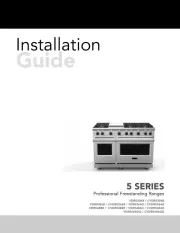
8 September 2025
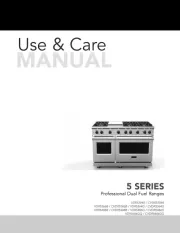
3 April 2025
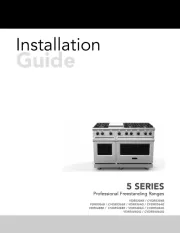
3 April 2025
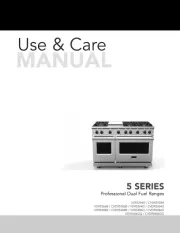
3 April 2025
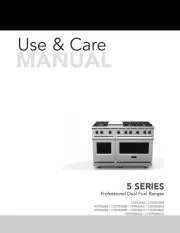
3 April 2025
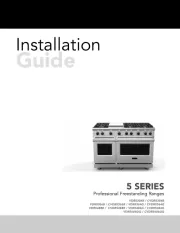
3 April 2025
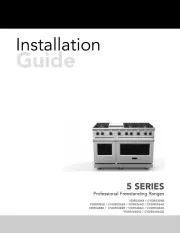
3 April 2025
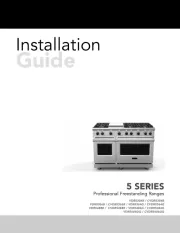
3 April 2025
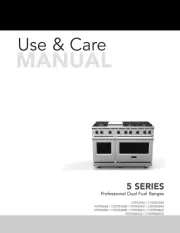
3 April 2025
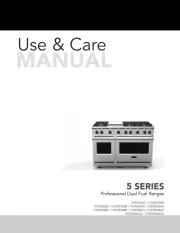
3 April 2025
Handleiding Fornuis
- MPM
- Bromic
- MBM
- PITT
- Domo
- Bompani
- Swan
- Scandomestic
- Xblitz
- Izzy
- Hestan
- Cookology
- Schaub Lorenz
- Royal Catering
- Nodor
Nieuwste handleidingen voor Fornuis
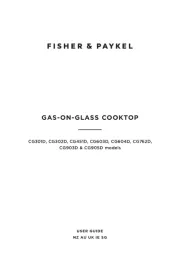
13 September 2025
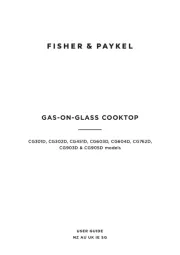
12 September 2025
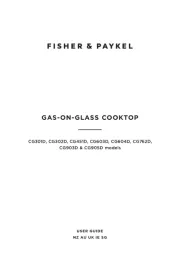
12 September 2025
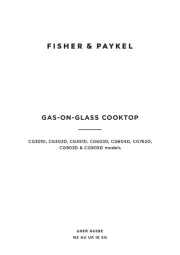
12 September 2025
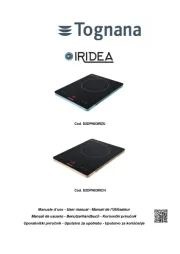
10 September 2025
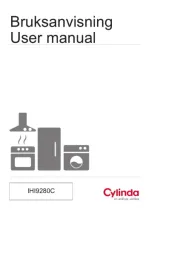
9 September 2025
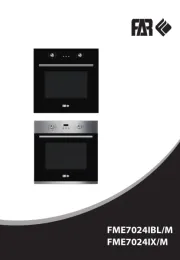
9 September 2025
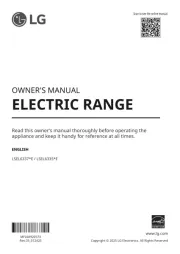
9 September 2025
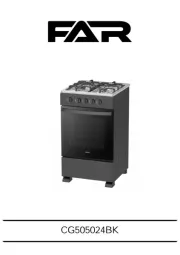
9 September 2025
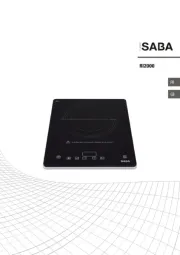
9 September 2025